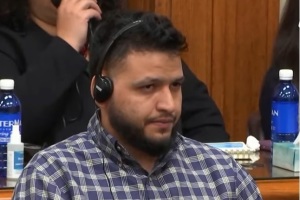Teachers union slams Texas plan to incorporate Bible references into school curriculum
Draft curriculum includes New Testament references, lessons on 'early history of Christianity'

Correction Appended
A Texas teachers union that opposes a plan to allow Christian references in elementary school curriculum is a staunch supporter of the homosexual and trans movement.
The State Board of Education (SBOE) is holding a week-long series of public hearings in Austin on proposed curriculum which provides instructional guidelines for K-5 teachers that include historical references to the Bible.
Inspired by House Bill 1605, which established a revised process by which SBOE approves “high-quality instructional materials,” the draft curriculum has spurred controversy over the inclusion of references to the “Christian Bible,” the Gospel narrative of Jesus being born in a manger, and defining the word “Messiah” as a “savior sent by God.”
The documents were released earlier this year ahead of November, when the Texas Education Agency (TEA) will adopt new Texas Open Resource Materials for the 2025-26 school year.
As part of a third-grade teacher guide for K-5 Reading Language Arts (RLA) titled “Ancient Rome,” the draft curriculum includes lessons on “the early history of Christianity, with selections from the New Testament books of the Christian Bible providing context on beliefs about Jesus of Nazareth.”
In addition to explaining its use of both the terms BC/AD and BCE (before the Common Era) and CE (of the Common Era), the document notes that prior to third grade, students were taught about the civilizations of the Aztecs, Mayas and Incas, along with the “life, tradition, and government” of ancient Greece, including its mythology.
In a lesson titled “Christianity and the Roman Empire,” the stated reading objective is for students to “explain how Jesus of Nazareth’s life impacted the Roman Empire.”
Teachers are instructed to “tell students that today they will be listening closely to find evidence that supports the idea that the life of Jesus of Nazareth impacted the Roman Empire,” and that such evidence will be marked with an exclamation (!) symbol.
The guidebook features maps of the Roman Empire in the first century as well as of ancient Judea, the area known today as the modern state of Israel. A description of Judea reads in part: “Jewish people practiced a religion known as Judaism, and they worshiped a single God. This religion was very different from the Roman practice of worshiping many different gods.”
Citing what it calls the “Hebrew Scriptures,” the draft curriculum refers to a belief that those texts predicted that there would be a coming Messiah, or Savior sent by God.”
“During the time of the Roman Empire, many in the Jewish faith believed this Messiah would come to free the Jewish people from Roman rule,” the document states.
Another image under the “Christianity and the Roman Empire” section depicts a cropped version of Leonardo da Vinci’s “The Last Supper” and states that 2,000 years ago, “when Augustus Caesar ruled the Roman Empire, a Jewish man who lived in Judea would ultimately have a very significant impact on the history of the empire and beyond.
“His name was Jesus of Nazareth.”

The chapter later clarifies that the New Testament was eventually combined with the Hebrew Scriptures to form the Christian Bible, which includes “what modern Christians believe to be the circumstances surrounding the birth of Jesus, celebrated today as Christmas.”
The Bible, however, is not the only literary work referenced in the draft curriculum: an entire “Classic Tales” section is devoted to “Wind in the Willows,” the classic 1908 children’s novel by Kenneth Grahame, while another section covers Native American literary works.
In response to the draft curriculum, the Texas American Federation of Teachers (AFT) cited a report from the Texas Freedom Network in its warning that the “materials overemphasize Christianity while giving little coverage to other religions or belief systems” and that its “references to Christianity and its influence and impact whitewash and distort historical truth.”
AFT has long opposed efforts to ban students from entering opposite-sex spaces — such as prohibiting boys who identify as trans from entering girls' bathrooms and locker rooms — calling such legislation “exclusionary, regressive bills that hurt children.”
AFT also promotes pro-trans literature like I Am Jazz, an illustrated children's book based on the life of Jazz Jennings, a trans-identified teenager. The organization is also calling for the repeal of Texas state law that requires educational material to “state that homosexual conduct is not an acceptable lifestyle and is a criminal offense.”
The Christian Post reached out Thursday to AFT for comment. This story will be updated if a response is received.
So are HB 1605 and other legislative efforts seeking to add biblical references into public education legal?
Keisha Russell, senior counsel at First Liberty Institute, says not only has the U.S. Supreme Court ruled on it, but the Bible itself is recognized as an integral part of American history and education.
"In Kennedy v. Bremerton, the Supreme Court confirmed that the Establishment Clause cannot be used as an excuse to bar religion from the public square," Russell told CP Thursday via email. "As the U.S. Supreme Court has recognized for decades, teaching the Bible is useful, and even necessary, to a well-rounded education.
"After all, the Bible is the most popular book in history, part of the foundation of our American government, and has been praised for its literary prose."
TEA has until Oct. 14 to complete any revisions to its new Bible-infused Bluebonnet Learning program before the board votes in November on a final list of approved materials.
Correction: An earlier version of this article published on Friday, Sept. 13, 2024, incorrectly reported that the Texas Education Agency quoted liberally from Harry Potter and the Sorcerer’s Stone by J.K. Rowling in the Open Education Resources curriculum. A statement provided on Monday, Sept. 16, 2024, by a Texas Education Agency spokesman, clarified to CP that any Harry Potter product is “in no way related to the Open Education Resources (OER) curriculum and there are no mentions of Harry Potter in the product,” and that the Harry Potter lesson that was referenced in this story is a “completely separate resource on the Gateway called OnTrack which is not part of OER or the Instructional Materials Review and Approval (IMRA) process.”
Ian M. Giatti is a reporter for The Christian Post and the author of The Assembly On The Rock: Israel, the New Covenant + the Continuity of Scripture. He can be reached at: ian.giatti@christianpost.com.




























